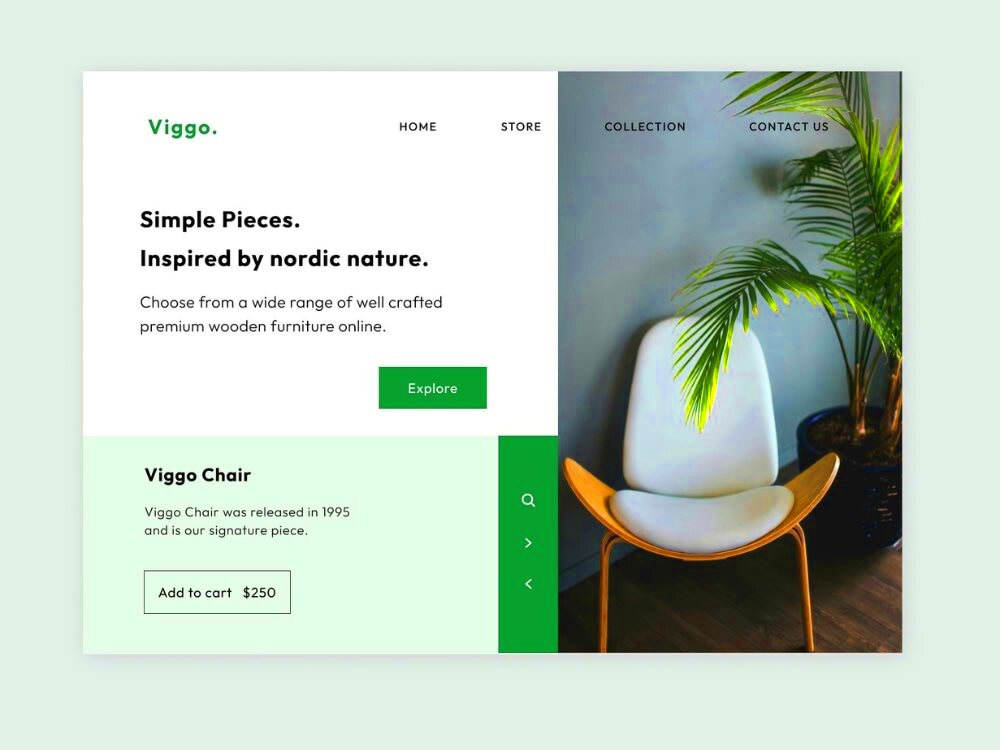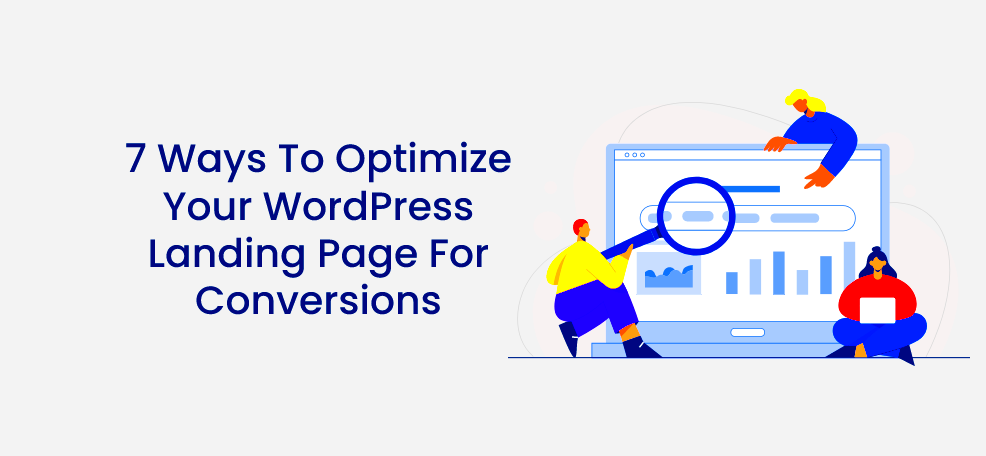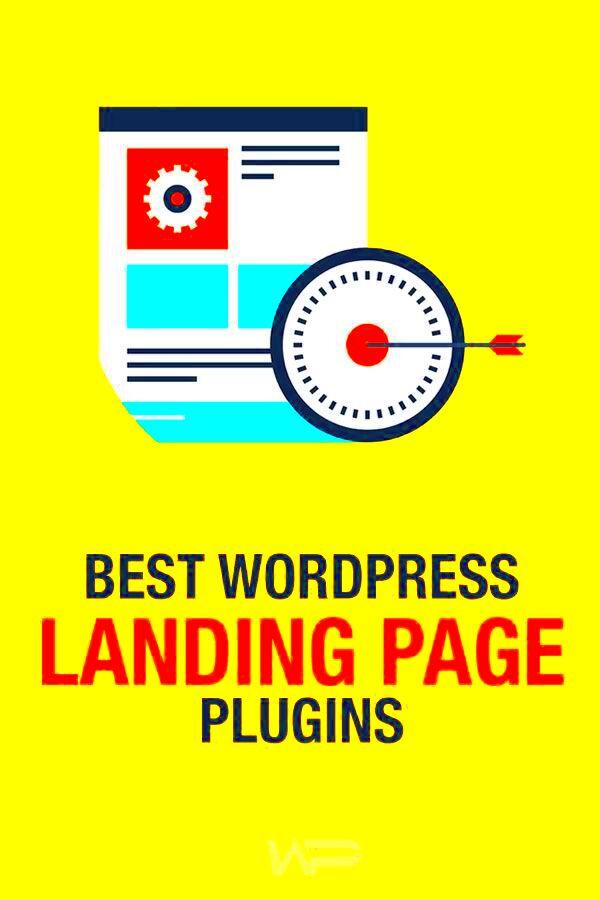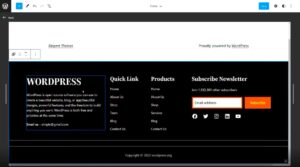When it comes to digital marketing, landing pages are critical players in your conversion strategy. These specially designed web pages serve a specific purpose—whether it’s to collect leads, promote a product, or encourage sign-ups. So why exactly are they so important? Let’s dive in!
- Focused Goal: Unlike your website’s homepage, a landing page is laser-focused on a single goal. This clarity helps guide visitors effortlessly toward taking action.
- Enhanced User Experience: A well-structured landing page reduces distractions, leading to an improved user experience. Visitors know what to expect and can easily make informed decisions.
- Higher Conversion Rates: Statistically, landing pages can boost conversion rates significantly. With targeted content, they encourage visitors to complete a desired action.
- Data Tracking: Landing pages allow for easier tracking of key metrics. You can analyze visitor behavior and optimize your approach for better results over time.
- Improved Marketing ROI: Every cent counts in marketing! By utilizing landing pages, you’re more likely to see a substantial return on ad spend (ROAS) since they cater to specific campaigns.
Key Elements of a High-Converting Landing Page

Now that we know why landing pages are crucial, let’s discuss the key elements that make them effective. Ensuring these components are in place can greatly increase your chances of conversion!
| Element | Description |
|---|---|
| Compelling Headline | Your headline should grab attention and convey the value of what you’re offering immediately. |
| Persuasive Copy | Use engaging text that speaks directly to the visitor’s needs and pain points. Make it relatable! |
| Clear Call-to-Action (CTA) | Your CTA buttons should stand out and clearly outline what will happen when clicked (e.g., “Sign Up Now”). |
| Visuals | Engaging images or videos can break up text and keep visitors interested. Make sure they support your message! |
| Simple Form | If collecting user information, keep your forms short and easy to complete. Less is more! |
| Social Proof | Incorporating testimonials, reviews, or statistics can build trust and encourage conversions. |
In summary, combining these elements effectively can lead to a landing page that not only attracts visitors but converts them into loyal customers. So get out there and start optimizing!
Creative Landing Page Ideas for Different Niches

When it comes to landing pages, creativity knows no bounds! Different niches call for unique approaches to ensure that your landing page does the heavy lifting in converting visitors into customers. Here are some creative ideas tailored for various industries:
- Health and Wellness: Use vibrant imagery and calming colors to evoke trust. Consider incorporating an interactive quiz that helps visitors uncover personalized health tips. This not only engages them but also shows you care about their individual needs.
- Technology: Show off your product’s features through a visually appealing demo video. Instead of lengthy descriptions, utilize SVG animations that illustrate complex functionalities in an easy-to-understand way.
- Fashion: Create a “lookbook” style layout, where visitors can mix and match styles. Include a “Shop the Look” feature that allows users to easily add multiple items to their cart at once!
- Education: Use a clean, minimalist design with a subscription model for access to exclusive content. Highlight success stories from past students as a way to entice new users to register.
- E-commerce: A countdown timer can create urgency! Show off limited-time offers or flash sales. Pair this with high-quality product images and concise, persuasive copy to guide prospects toward making a purchase.
Don’t forget to A/B test different layouts and designs to see what resonates best with your target audience. Creativity coupled with strategic thinking can truly transform your landing page into a conversion powerhouse!
Using Testimonials and Social Proof Effectively

Have you ever made a purchase based on a friend’s recommendation? That’s the power of social proof! When it comes to landing pages, leveraging testimonials and social validation can significantly boost conversions. But how do you use them effectively? Let’s dive in!
- Placement: Position testimonials above the fold. When visitors immediately see positive feedback, they’re more likely to trust your brand from the get-go.
- Diverse Formats: Mix it up! Use text testimonials, video reviews, and even social media posts from satisfied customers. Video testimonials, especially, add a human touch that can’t be beaten.
- Data-Driven Proof: Use statistics or case studies that highlight the impact of your product/service. For instance, “97% of customers report increased productivity using our software” adds a layer of credibility.
- Authenticity: Ensure your testimonials feel genuine. Include customer names, photos, and even their profession if applicable. Real stories resonate, making potential customers feel connected to your existing clientele.
- Case Studies: Showcase in-depth stories of customer journeys. This not only highlights your product’s effectiveness but tells a compelling narrative that potential clients can relate to.
Incorporating testimonials and social proof isn’t just about piling up positive reviews; it’s an art of storytelling that fosters trust. Engage your visitors with authentic experiences, and watch as your conversion rates soar!
Incorporating Clear Call-to-Actions (CTAs)
When it comes to boosting conversions on your WordPress landing pages, one of the most crucial elements is the Call-to-Action (CTA). Think of CTAs as signposts on a journey. They guide your visitors on what to do next. If they can’t find these signposts, they might just wander off your site without taking any meaningful action. So, how can you ensure your CTAs are clear, compelling, and effective? Here are some tips:
- Be Direct: Use concise language that tells visitors exactly what you want them to do. Phrases like “Sign Up Now”, “Get Your Free Trial”, or “Download the Guide” are straightforward and leave no room for confusion.
- Make it Stand Out: Your CTA buttons should contrast with your landing page colors. Use bold colors and larger fonts to draw attention.
- Placement is Key: Position your CTAs strategically—put them above the fold, where they’re visible without any scrolling. A good practice is to repeat them throughout the page at logical intervals.
- Create Urgency: Words like “Limited Time Offer” or “While Supplies Last” can prompt visitors to act immediately rather than putting it off.
- Test and Optimize: Don’t settle for your first version. A/B testing different CTAs can offer insights into what works best, allowing you to refine your approach continually.
A well-designed CTA is not just a button; it’s a powerful tool for driving engagement and boosting conversions. Make sure yours are compelling enough to prompt action!
The Role of Visuals in Landing Page Design
Let’s face it—humans are visual creatures. Your WordPress landing page can have the best content and offers in the world, but without engaging visuals, you might just lose your audience before they read a single word. So, what should you know about the role of visuals in landing page design? Here are a few important points:
- Create a Cohesive Look: Your visuals should align with your brand. This includes color palettes, typography, and overall style. Consistency builds trust.
- High-Quality Images: Use sharp, professional photos or graphics that resonate with your message. Blurry or pixelated images can send a negative message about the quality of your product or service.
- Incorporate Infographics: If you’re presenting complex information, infographics are a great way to simplify and clarify. They’re often more engaging than text alone.
- Use Videos Wisely: A well-produced video can capture attention and explain your offer quickly. But remember, it should enhance your message, not distract from it.
- Whitespace Matters: Don’t feel compelled to fill every inch of your page. Utilize whitespace to give visuals room to breathe, making your content easier to digest.
In summary, visual elements on your landing page serve not only to attract attention but also to guide users through their journey. Combine stunning visuals with a clear message, and watch your conversions soar!
7. Optimizing Your Landing Page for SEO
When it comes to maximizing the performance of your WordPress landing page, search engine optimization (SEO) is non-negotiable. Even the most visually appealing landing page won’t perform if it’s not discoverable. Let’s dive into some effective strategies that can help you optimize your landing page for SEO.
- Keyword Research: Before writing any content, identify keywords related to your product or service. Use tools like Google Keyword Planner or Ubersuggest to find keywords that align with your target audience’s search intent.
- Compelling Meta Tags: Make sure to craft an engaging title tag and a clear meta description. These tags play a crucial role in drawing users from search engine results to your landing page. Use your primary keyword here!
- High-Quality Content: Ensure that your landing page content is informative, engaging, and aligned with user search intent. Break up text with headers, bullet points, and images to make it easy to scan.
- Image Optimization: Always optimize your images by using relevant alt texts and compressing file sizes. This not only improves loading times but also helps search engines understand what your images are about.
- Mobile Responsiveness: With an increasing number of users accessing websites via mobile devices, ensure that your landing page is mobile-friendly. Google prioritizes mobile-optimized sites in its search rankings.
- Internal Linking: If there’s relevant content on your site, link to it from your landing page. This can help with user navigation and improve your overall site structure.
Remember, optimizing your landing page for SEO is not a one-time task but an ongoing process that can give you lasting benefits. Take time to analyze and adjust your strategies as search engine algorithms evolve!
A/B Testing: Finding What Works Best
A/B testing is a game changer when it comes to refining your WordPress landing page for better conversions. This technique allows you to compare two versions of your page to see which performs better in terms of user engagement. Let’s break down the essentials of A/B testing.
- Understanding A/B Testing: At its core, A/B testing involves creating two versions of your landing page—Version A and Version B. You’ll show these to different sets of visitors and see which one drives more conversions.
- What to Test: Focus on elements such as headlines, call-to-action buttons, images, and even color schemes. These small tweaks can make a big difference!
- Tools for A/B Testing: There are several tools available for A/B testing, including Google Optimize, Optimizely, and VWO. These tools make it easy to set up, track, and analyze your tests.
- Statistical Significance: Before declaring a “winner,” ensure that your results are statistically significant. This means you have enough data to confidently say one version outperformed the other.
- Iterate & Improve: A/B testing is not a one-off task. Once you find a winning variation, make further tweaks and run another test. It’s about continuous improvement!
- Document Findings: Keep a record of your tests and their outcomes. This documentation will help you make informed decisions in the future.
A/B testing helps you to fine-tune your landing page based on actual user behavior rather than assumptions. So don’t hesitate to experiment—your next big win is just a test away!
9. Mobile Responsiveness: A Necessity for Conversions
In today’s digital landscape, where over half of all web traffic comes from mobile devices, mobile responsiveness is not just a nice-to-have feature — it’s a necessity for boosting conversions. Imagine a potential customer searching for your product or service on their smartphone, only to encounter a jumbled landing page that’s nearly impossible to navigate. Yikes! That’s a surefire way to lose them before you even get a chance to engage.
To ensure your landing page is mobile-friendly, consider these key aspects:
- Flexible Layout: Use a responsive design that adapts seamlessly to different screen sizes. This ensures that your content looks good and is easy to interact with, regardless of whether a user is on a phone, tablet, or desktop.
- Fast Loading Times: Mobile users are often on-the-go, meaning they expect pages to load quickly. Optimize images, leverage browser caching, and minimize script usage to enhance speed.
- Clear Call-to-Actions (CTAs): Ensure your CTAs are large enough to tap easily, and position them strategically to catch the user’s attention without overwhelming them.
- Readable Text: Use legible fonts and adequate font sizes. Avoid using too many different font types, as it can look cluttered and confusing.
Remember, a well-optimized mobile landing page doesn’t just improve user experience; it significantly increases your chances of converting visitors into customers. So, if your landing page isn’t mobile-responsive yet, it’s high time to change that!
10. Tracking and Analyzing Landing Page Performance
Once your landing page is live, the work doesn’t stop there. In fact, tracking and analyzing its performance is crucial for continuous improvement and optimizing your conversion rates. By digging into the data, you can discover what’s working, what’s not, and how to tweak your page for better results.
Here are some essential metrics and tools to consider for your analysis:
| Metric | Description | Why It Matters |
|---|---|---|
| Conversion Rate | The percentage of visitors who complete a desired action. | Indicates how effectively your landing page prompts action. |
| Bounce Rate | The percentage of visitors who leave your page without interacting. | A high bounce rate may indicate confusion or a lack of relevance. |
| Average Time on Page | The amount of time visitors spend on your landing page. | More time spent may suggest engagement, which can lead to conversions. |
| Click-Through Rate (CTR) | The percentage of users who click on your CTA. | A high CTR indicates that your CTA is compelling and visible. |
To track these metrics effectively, utilize tools like Google Analytics, Hotjar, or Crazy Egg. Tools such as these offer valuable insights into user behavior and help you identify areas for improvement. A/B testing is another fantastic strategy; by comparing two versions of your landing page, you can pinpoint which changes lead to higher conversion rates.
Remember, the key to a successful landing page is not just to set it and forget it. Continuous tracking and analysis are your best friends when it comes to maximizing conversions! So roll up your sleeves and dive into that data.
WordPress Landing Page Ideas to Boost Conversions
Creating an effective landing page in WordPress is crucial for businesses aiming to increase their conversion rates. This dedicated web page should focus solely on a specific goal, whether it’s capturing leads, selling a product, or promoting a service. Here are some creative ideas to enhance your landing pages:
- Clear and Compelling Headlines: Your headline is the first thing visitors see. Make it catchy and relevant to grab attention immediately.
- Concise and Persuasive Copy: Write clear, concise, and persuasive content that highlights the benefits of your offering. Be sure to address the visitors’ pain points.
- Use of Visuals: Incorporate high-quality images, infographics, or videos that complement your content and draw attention to key areas.
- Strong Call to Action (CTA): Include a prominent and irresistible CTA button, encouraging users to take the desired action, whether it’s signing up or making a purchase.
- Social Proof: Display testimonials, reviews, or case studies to build trust and credibility with your audience.
- Mobile Responsiveness: Ensure that your landing pages are fully responsive to provide a seamless experience on different devices.
- A/B Testing: Experiment with different designs, copy, and CTAs to see what resonates best with your audience.
Example Table of Key Elements
| Element | Description |
|---|---|
| Headline | Catchy and engaging title that addresses user needs. |
| Images | High-quality visuals that enhance the message. |
| CTA | Prominent buttons that guide users toward action. |
In conclusion, consistently refining your landing pages through testing and feedback is essential for improving conversion rates. By focusing on the elements mentioned and being open to changes, you will drive better results and grow your business effectively.



